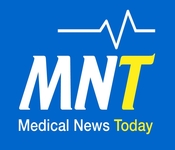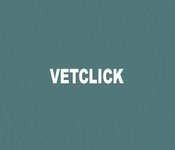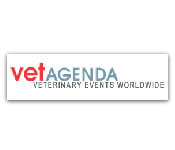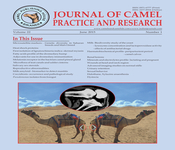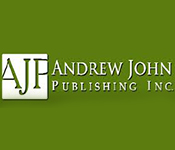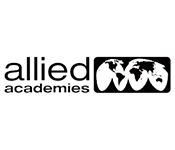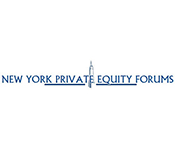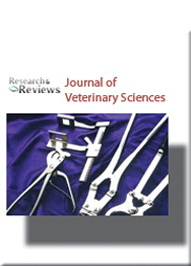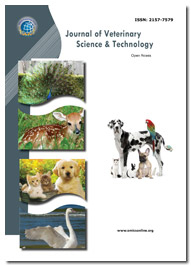Theme: Novel Techniques and Advancements in Veterinary Science and its Relevant Aspects
Veterinary 2016
Track 1: Veterinary
Veterinary science is important to the study of livestock, herd health and monitoring the spread of disease. It requires the application of scientific knowledge in multiple areas and the use of technical skills in disease prevention that may affect both pets and wild animals. Animal Production facilitates improvements in agricultural productivity, with emphasis on animal production systems and administers the animal improvement. Animal production sector has been undergoing change at a remarkable pace over the past few decades.
Related Veterinary Conferences | Veterinary Medicine Conferences| ConferenceSeries Ltd
6th Global Veterinary Summit, November 14-16, 2016, Atlanta, USA; International Dairy Conference, June 30-July 02, 2016, New Orleans, USA; 4th Animal Health and Veterinary Medicine Congress, Sep 29-Oct 1, 2016, Valencia, Spain; 2nd International Conference on Livestock Nutrition, July 21-22, 2016, Brisbane, Australia; Veterinary Vaccinology Network Conference, January 5-6, 2016, Manchester, UK; The North American Veterinary Community Conference, January 16-20, 2016, Orlando, Florida, USA; 1st Annual International Conference on Veterinary and Animal Science, December 15-16, 2016, Colombo, Sri Lanka; Pacific Veterinary Conference, June 23-26, 2016, San Francisco, USA; 13th Egyptian Society Cattle Diseases Conference, February 1-4, 2016, Hurghada, Egypt
Related Societies:
Austrian Small Animal Veterinary Association, Austria; Association of Practicing Veterinary Surgeons, Russia; Danish Small Animal Veterinary Association, Denmark; Finnish Society of Veterinary Ophthalmology, Finland; The North American Veterinary Community, USA; Hungarovet, Hungary; Irish Companion Animal Veterinary Association, Ireland; Netherlands Association of Companion Animal Medicine, Netherlands; Polish Small Animal Veterinary Association, Poland; Finnish Veterinary Association, Finland
Track 2: Veterinary Medicine
There is a huge amount of variation in different animal species, and thus each species may need specific medicines for the same disease. Hence, the research and marketing of veterinary medicines is more complicated as compared to human medicines. Unlike human medicines, there is no regulation in the prices of veterinary medicines. The selection of veterinary medicines accounts for more than 270 trade names. The worldwide Veterinary Vaccines market ($4.23 Bn) accounted for approximately 20% of the total Vaccines market ($29.71 Bn) in 2010. It has been estimated to grow with a CAGR of 5.80% to reach the market size of $5.6 Bn by 2016.
Related Veterinary Conferences | Veterinary Medicine Conferences| ConferenceSeries Ltd
6th Global Veterinary Summit, November 14-16, 2016, Atlanta, USA; International Dairy Conference, June 30-July 02, 2016, New Orleans, USA; 4th Animal Health and Veterinary Medicine Congress, Sep 29-Oct 1, 2016, Valencia, Spain; 2nd International Conference on Livestock Nutrition, July 21-22, 2016, Brisbane, Australia; UK Veterinary Vaccinology Network Conference 2016, January 5-6, 2016, Manchester, UK; The North American Veterinary Community Conference, January 16-20, 2016, Orlando, Florida, USA; 18th International Conference on Animal Science and Veterinary Medicine, August 25-26, 2016, London, UK; Pacific Veterinary Conference, June 23-26, 2016, San Francisco, USA; 13th Egyptian Society Cattle Diseases Conference, February 1-4, 2016, Hurghada, Egypt
Related Societies:
Slovak Small Animal Veterinary Association, Slovakia; Swedish Society of Veterinary Medicine, Sweden; Association of Veterinary Technicians in Turkey, Turkey; Association of British Veterinary Acupuncture, UK; The North American Veterinary Community, USA; Finnish Society of Veterinary Ophthalmology, Finland; Irish Companion Animal Veterinary Association, Ireland; Austrian Small Animal Veterinary Association, Austria; New Zealand Veterinary Nursing Association Ltd, New Zealand; Japanese Society for Laboratory Animal and Environment, Japan
Track 3: Clinical Veterinary
The worldwide veterinary healthcare market, calculated at $24.8 Billion in 2014, is set to reach $34.39 Billion by 2019, retaining a CAGR of 7.86% during the forecast period. The new type of diseases in animals and their subsequent transfer to humans through animal feed consumption and companionship are escalating the veterinary healthcare industry globally. The deliberate decisions in research and development of manufacturers are expected to positively impact global veterinary healthcare market.
Veterinary diagnostics market has witnessed a paradigm shift in the past decade with the emergence of a number of lavish and sound products, which had a positive impact on the overall growth of the market. The market has seen recent advancements from the human diagnostics segment being adapted into the veterinary diagnostics segment. This trend still persists and with the human diagnostics getting cheaper, their application into the veterinary segment is expected to grow further.
Related Veterinary Conferences | Veterinary Medicine Conferences| ConferenceSeries Ltd
6th Global Veterinary Summit, November 14-16, 2016, Atlanta, USA; International Dairy Conference, June 30-July 02, 2016, New Orleans, USA; 4th Animal Health and Veterinary Medicine Congress, Sep 29-Oct 1, 2016, Valencia, Spain; 2nd International Conference on Livestock Nutrition, July 21-22, 2016, Brisbane, Australia; UK Veterinary Vaccinology Network Conference 2016, January 5-6, 2016, Manchester, UK; The North American Veterinary Community Conference, January 16-20, 2016, Orlando, Florida, USA; 18th International Conference on Animal Science and Veterinary Medicine, August 25-26, 2016, London, UK; Pacific Veterinary Conference, June 23-26, 2016, San Francisco, USA; 13th Egyptian Society Cattle Diseases Conference, February 1-4, 2016, Hurghada, Egypt
Related Societies:
Canadian Veterinary Medical Association, Canada; Laboratory Animal Science Association, UK; American Veterinary Medical Association, USA; World Equine Veterinary Association, Brazil; The North American Veterinary Community, USA;
Singapore Veterinary Association, Singapore; Hungarovet, Hungary; Netherlands Association of Companion Animal Medicine, Netherlands; Finnish Society of Veterinary Ophthalmology, Finland; Swedish Society of Veterinary Medicine, Sweden
Track 4: Veterinary Economics
The Veterinary Services sector is labor intensive. In 2015, wage costs are comprised of 36.6% of industry revenue, compared with depreciation costs comprising of 2.3%. For every dollar spent on wages, the industry incurs an estimated $0.06 in capital costs. The functionality of an animal hospital requires a significant input of knowledge and skill. There is a critical level of hands-on care which is required in diagnosing and treating animals. Veterinarians are well educated and thoroughly skilled and this results in elevated wage costs. Support is required in the areas of registering the arrival of an animal at the hospital and receiving payments as well as taking samples, exercising, feeding, grooming and cleaning animals.
Related Veterinary Conferences | Veterinary Medicine Conferences| ConferenceSeries Ltd
6th Global Veterinary Summit, November 14-16, 2016, Atlanta, USA; International Dairy Conference, June 30-July 02, 2016, New Orleans, USA; 4th Animal Health and Veterinary Medicine Congress, Sep 29-Oct 1, 2016, Valencia, Spain; 2nd International Conference on Livestock Nutrition, July 21-22, 2016, Brisbane, Australia; Veterinary Economics Hospital Design Conference, August 24-26, 2016, Kansas City, Missouri, USA; The North American Veterinary Community Conference, January 16-20, 2016, Orlando, Florida, USA; 18th International Conference on Animal Science and Veterinary Medicine, August 25-26, 2016, London, UK; Pacific Veterinary Conference, June 23-26, 2016, San Francisco, USA; 48th Annual Bovine Practitioners Conference, September 15-17, Charlotte, N.C., USA
Related Societies:
Belgian Veterinary Computer Association, Belgium; Czech Academy of Agricultural Sciences, Czech Republic; Austrian Small Animal Veterinary Association, Austria; Hellenic Veterinary Medical Society, Greece; Nordic Society for Veterinary Epidemiology, Iceland; World Equine Veterinary Association, Brazil; Laboratory Animal Science Association, UK; Swedish Society of Veterinary Medicine, Sweden; Association of Practicing Veterinary Surgeons, Russia; Association of British Veterinary Acupuncture, UK
Track 5: Veterinary Research
The veterinary profession is basically a science-based profession. Veterinary research has been responsible for remarkable achievements, of which the global eradication of rinderpest and the production of the first vaccine for a retrovirus are two examples. The UK has a highly efficient research base in the veterinary sciences, that is competitive nationally with other research areas of similar size and globally with both established scientific powers (USA) and emerging competitors (China, Brazil).The welfare of the 20 million companion animals in the UK is dependent on solid research, as is the productivity of its food animals. Our increasing interdependence with animals and their products may well be the most crucial risk factor to our health and well-being with regard to infectious diseases. Acknowledgement of this interdependence needs to be translated in visible support for the veterinary profession and veterinary research.
Related Veterinary Conferences | Veterinary Medicine Conferences| ConferenceSeries Ltd
6th Global Veterinary Summit, November 14-16, 2016, Atlanta, USA; International Dairy Conference, June 30-July 02, 2016, New Orleans, USA; 4th Animal Health and Veterinary Medicine Congress, Sep 29-Oct 1, 2016, Valencia, Spain; 2nd International Conference on Livestock Nutrition, July 21-22, 2016, Brisbane, Australia; Federation of Asian Small Animal Veterinary Association Congress 2016, April 18-21, 2016, Kuala Lumpur, Malaysia; The North American Veterinary Community Conference, January 16-20, 2016, Orlando, Florida, USA; 1st Annual International Conference on Veterinary and Animal Science, December 15-16, 2016, Colombo, Sri Lanka; Pacific Veterinary Conference, June 23-26, 2016, San Francisco, USA; 48th Annual Bovine Practitioners Conference, September 15-17, Charlotte, N.C., USA
Related Societies:
Austrian Small Animal Veterinary Association, Austria; Nordic Society for Veterinary Epidemiology, Iceland; Societa' Italiana Veterinari per Equini, Italy; Finnish Society of Veterinary Ophthalmology, Finland; Scandinavian Society for Laboratory Animal Science, Norway; Hungarovet, Hungary; Polish Society of Veterinary Science, Poland; Netherlands Association of Companion Animal Medicine, Netherlands; General Association of Veterinary Surgeons in Romania, Romania; Finnish Veterinary Association, Finland
Track 6: Food Animal
The global animal food market is expected to register moderate growth between 2016 and 2018. The growth of the market is spurred on by the rising consciousness among individuals pertaining to the health and wellness of their pets. There is an increased awareness among the Pet owners around the world about the significance of pet nutrition, which has significantly propelled the animal food market in the recent times. Meanwhile, rising disposable income of people is also expected to exaggerate the demand for animal food during the forecast period. Impelled by factors such as surge in urbanization, growing preference for nuclear families, changing lifestyle, and changing perception among consumers towards animal health, the worldwide animal food market is likely to grow significantly during the forecast period. However, manufacturers might have to take the necessary steps to minimize the chances of their products stimulating side effects in pets, to fortify a sustainable growth of the worldwide animal food market in the near future. The major players in the market include Annamaet PetFoods, Azmira Holistic Animal Care, Arkat Nutrition, Bell Rock Growers, Inc., Active Life Pet Products, Breeder's Choice Pet Foods, Inc., Blue Seal Feeds, Inc., Bench & Field Pet Foods, BalanceDiet, Chenango Valley Pet Foods, Inc., Cloud Star Corporation, Chomp, Inc., Newman's Own Organic, Nutro Products, Inc., and others.
Related Veterinary Conferences | Veterinary Medicine Conferences| ConferenceSeries Ltd
6th Global Veterinary Summit, November 14-16, 2016, Atlanta, USA; International Dairy Conference, June 30-July 02, 2016, New Orleans, USA; 4th Animal Health and Veterinary Medicine Congress, Sep 29-Oct 1, 2016, Valencia, Spain; 2nd International Conference on Livestock Nutrition, July 21-22, 2016, Brisbane, Australia; 7th FIAAP Animal Nutrition Conference, March 29, 2016, Bangkok, Thailand; Pacific Northwest Animal Nutrition Conference, January 18-19, 2016, Illinois, USA; Mid-Atlantic Nutrition Conference, March 23-24, 2016, Maryland, USA; 67th Annual Meeting of the European Federation of Animal Science, August 29-September 02, 2016, Belfast, UK; 1st Annual International Conference on Veterinary and Animal Science, December 15-16, 2016, Colombo, Sri Lanka
Related Societies:
Serbian Association of Small Animal Practitioners, Serbia and Montenegro; American Ornithologists' Union, USA; Danish Small Animal Veterinary Association, Denmark; Finnish Society of Veterinary Ophthalmology, Finland; The North American Veterinary Community, USA; American Ferret Association, USA; Ukrainian Small Animals Veterinary Association, Ukraine; Australian Society for Veterinary Pathology, Australia; Association of British Veterinary Acupuncture, UK; Swedish Society of Veterinary Medicine, Sweden
Track 7: Animal Reproduction and Genetics
Reproduction plays a vital role in providing for the continued existence of a species. Animals compete with other individuals to maintain themselves for a period of time that would be sufficient to enable them to produce tissue that would be indispensable to the maintenance of their species. The reproductive tissue usually becomes separated from the individual to form an independent organism.
Animal genetics impart advance breeding technology and testing services such as genetic trait tests, DNA typing and genetic disease tests. In recent years, animal genetics market witnessed tremendous growth which is mainly associated to rising demand of animal products due to increasing global population, development of cutting-edge technologies in animal genetic testing and increasing awareness about veterinary genetic disorders. The animal genetics market is segmented by testing services, products and geography. Developed geographies like Europe and North America are likely to grow at comparatively lower CAGR than the Asia-Pacific market, which is expected to witness a much faster growth during the forecast period, immensely driven by the growing desire of animal derived products, implementation of animal welfare acts and increase in the population of livestock animals.
Related Veterinary Conferences | Veterinary Medicine Conferences| ConferenceSeries Ltd
6th Global Veterinary Summit, November 14-16, 2016, Atlanta, USA; International Dairy Conference, June 30-July 02, 2016, New Orleans, USA; 4th Animal Health and Veterinary Medicine Congress, Sep 29-Oct 1, 2016, Valencia, Spain; 2nd International Conference on Livestock Nutrition, July 21-22, 2016, Brisbane, Australia; 35th International Society for Animal Genetics Conference, July 23-27, 2016, Utah, USA; XXIV International Plant and Animal Genome Conference, January 9-13, 2016, San Diego, CA, USA; 18th International Congress of Animal Reproduction, June 26-30, 2016, Tours, France; The North American Veterinary Community Conference, January 16-20, 2016, Orlando, Florida, USA; 1st Annual International Conference on Veterinary and Animal Science, December 15-16, 2016, Colombo, Sri Lanka
Related Societies:
New Zealand Veterinary Nursing Association Ltd, New Zealand; Association of British Veterinary Acupuncture, UK; American Veterinary Medical Association, USA; Finnish Society of Veterinary Ophthalmology, Finland; World Equine Veterinary Association, Brazil; Hungarovet, Hungary; Chinese Association of Animal Science and Veterinary Medicine, China; World Veterinary Association, Belgium; Society for Theriogenology, Brazil; South African Veterinary Association, South Africa
Track 8: Animal Welfare
Animal welfare complies with the desire of the prevention of unnecessary animal suffering. It means how an animal is coping with the conditions in which it survives. An animal is in a good state of welfare if it is safe, healthy, comfortable and well nourished, able to express innate behavior, and if it is not suffering from unpleasant states such as fear, pain, and distress. Animal welfare requires disease prevention and veterinary treatment, appropriate shelter, nutrition, management, humane handling and humane slaughter. Animal welfare refers to the state of the animal; the treatment received refers to animal care, animal husbandry, and humane treatment.
Related Veterinary Conferences | Veterinary Medicine Conferences| ConferenceSeries Ltd
6th Global Veterinary Summit, November 14-16, 2016, Atlanta, USA; International Dairy Conference, June 30-July 02, 2016, New Orleans, USA; 4th Animal Health and Veterinary Medicine Congress, Sep 29-Oct 1, 2016, Valencia, Spain; 2nd International Conference on Livestock Nutrition, July 21-22, 2016, Brisbane, Australia; 67th Annual Meeting of the European Federation of Animal Science, August 29-September 02, 2016, Belfast, UK; 2016 CFHS National Animal Welfare Conference, April 16-19, 2016, Ontario, Canada; 2016 Animal Care Conference, March 6-8, 2016, California, USA; IVSA Animal Welfare Conference 2016, April 22-24, 2016, Utrecht, Netherlands; Federation of Asian Small Animal Veterinary Association Congress 2016, April 18-21, 2016, Kuala Lumpur, Malaysia
Related Societies:
Austrian Small Animal Veterinary Association, Austria; House Rabbit Society, Australia; Veterinary Nurses Association of South Africa, South Africa; Malayasian Small Animal Veterinary Association, Malaysia; Russian Small Animal Veterinary Association, Russia; Veterinary Cancer Society, Canada; Irish Companion Animal Veterinary Association, Ireland; Finnish Society of Veterinary Ophthalmology, Finland; Japanese Society of Veterinary Science, Japan; Irish Veterinary Acupuncture Society, Ireland
Track 9: Veterinary Forensics
Veterinary Forensic Sciences is the convergence of a broad spectrum of sciences, including veterinary medicine, to provide answer to the questions of interest at a court of law related to animal abuse. It can be used to solve the animal related crime. Veterinary forensics is a continuous growing field that holds vast opportunities for research. As the field becomes more prominent, new areas of specialization will open up; giving investigators the chance to become specialists in one specific aspect of veterinary forensics and each of these will provide research opportunities. The melding of human and veterinary forensics will subsequently benefit society, protecting people and animals alike.
Related Veterinary Conferences | Veterinary Medicine Conferences| ConferenceSeries Ltd
6th Global Veterinary Summit, November 14-16, 2016, Atlanta, USA; International Dairy Conference, June 30-July 02, 2016, New Orleans, USA; 4th Animal Health and Veterinary Medicine Congress, Sep 29-Oct 1, 2016, Valencia, Spain; 2nd International Conference on Livestock Nutrition, July 21-22, 2016, Brisbane, Australia; 67th Annual Meeting of the European Federation of Animal Science, August 29-September 02, 2016, Belfast, UK; 2016 CFHS National Animal Welfare Conference, April 16-19, 2016, Ontario, Canada; 2016 Animal Care Conference, March 6-8, 2016, California, USA; IVSA Animal Welfare Conference 2016, April 22-24, 2016, Utrecht, Netherlands; Forensic and Policing Services Association (FAPSA) Conference 2016, May 12-13, 2016, Leicester, UK; 9th Annual Veterinary Forensic Science Conference, May 11-13, 2016, Florida, USA
Related Societies:
Veterinary Council of New Zealand, New Zealand; British Veterinary Association, UK; Japanese Society of Veterinary Science, Japan; Swedish Society of Veterinary Medicine, Sweden; Slovak Small Animal Veterinary Association, Slovakia; Irish Companion Animal Veterinary Association, Ireland; Societa' Italiana Veterinari per Equini, Italy; Scandinavian Society for Laboratory Animal Science, Norway; Serbian Association of Small Animal Practitioners, Serbia and Montenegro; Hellenic Veterinary Medical Society, Greece
Track 10: Avian and Exotics
The term "exotic pet" basically refers to anything but cats, dogs, fish or horses. For veterinarians, the category generally comprises of birds, small mammals, reptiles and amphibians. Exotic pets have become increasingly prevalent since the last decade. Some of the most popular are those on the tame end of the spectrum—rabbits, turtles, guinea pigs hamsters and even poultry. Exotics often offer advantages as alternative pets. They can be suitable for people with allergies to furry things, and mostly require less space than cats or dogs.
The avian sector has undergone major structural changes during the past few years due to the introduction of modern intensive production methods, genetic improvements, preventive disease control and biosecurity measures, increasing income and human population, and urbanization. These changes offer vast opportunities for poultry producers, particularly smallholders, to improve their farm income.
Related Veterinary Conferences | Veterinary Medicine Conferences| ConferenceSeries Ltd
6th Global Veterinary Summit, November 14-16, 2016, Atlanta, USA; International Dairy Conference, June 30-July 02, 2016, New Orleans, USA; 4th Animal Health and Veterinary Medicine Congress, Sep 29-Oct 1, 2016, Valencia, Spain; 2nd International Conference on Livestock Nutrition, July 21-22, 2016, Brisbane, Australia; 2016 Exotics Con Conference, August 27, September 1, 2016, Portland, Oregon, USA; 2016 Annual BOU Conference, April 5-7, 2016, Leicester, UK; North American Ornithological Conference 2016, August 16-20, 2016, Washington, USA; 2016 CFHS National Animal Welfare Conference, April 16-19, 2016, Ontario, Canada; 2016 Animal Care Conference, March 6-8, 2016, California, USA
Related Societies:
Austrian Small Animal Veterinary Association, Austria; Belgian Veterinary Computer Association, Belgium; Society for Theriogenology, Brazil; World Veterinary Association, Belgium; The North American Veterinary Community, USA; House Rabbit Society, Australia; South African Veterinary Association, South Africa; Netherlands Association of Companion Animal Medicine, Netherlands; Veterinary Council of New Zealand, New Zealand; Finnish Veterinary Association, Finland
Track 11: Recent Developments
The world of animal medicine has witnessed drastic technological advances in the last 20 years. Many of the new procedures and tools have been adopted from human medical practice. The advances have not only led to better treatments, but also faster and accurate diagnosis. From Ultrasounds and MRIs to the Amplatz Canine Ductal Occluder, there are many new technologies that furnish veterinarians with the ability to diagnose and ultimately save sick animals. MRI technology has been extremely instrumental in the advancement of human neuroscience. Vets are now using the imaging technology peek into the brains of pets and wild animals. On the other hand, ultrasounds have the advantage of not requiring anesthesia and comparatively cheap to perform. Laparoscopic procedures use a small camera and light source that can be incorporated into the abdominal or thoracic cavity for a peek inside the body. This is yet another example of adaptation of human medicine technology to the animal kingdom. With the development of new veterinary technology comes the necessity for those with specialized training. Veterinary technology promises a rewarding career for anyone who has a passion for animals.
Related Veterinary Conferences | Veterinary Medicine Conferences| ConferenceSeries Ltd
6th Global Veterinary Summit, November 14-16, 2016, Atlanta, USA; International Dairy Conference, June 30-July 02, 2016, New Orleans, USA; 4th Animal Health and Veterinary Medicine Congress, Sep 29-Oct 1, 2016, Valencia, Spain; 2nd International Conference on Livestock Nutrition, July 21-22, 2016, Brisbane, Australia; 67th Annual Meeting of the European Federation of Animal Science, August 29-September 02, 2016, Belfast, UK; British Society of Animal Science Annual Conference 2016, April 6-7, 2016, Chester, UK; The North American Veterinary Community Conference, January 16-20, 2016, Orlando, Florida, USA; 1st Annual International Conference on Veterinary and Animal Science, December 15-16, 2016, Colombo, Sri Lanka; Pacific Veterinary Conference, June 23-26, 2016, San Francisco, USA
Related Societies:
Nordic Society for Veterinary Epidemiology, Iceland; Societa' Italiana Veterinari per Equini, Italy; Danish Small Animal Veterinary Association, Denmark; Scandinavian Society for Laboratory Animal Science, Norway; American Ferret Association, USA
Hungarovet, Hungary; Veterinary Nurses Association of South Africa, South Africa; Belgian Veterinary Computer Association, Belgium; Polish Society of Veterinary Science, Poland; Finnish Veterinary Association, Finland
Track 12: Animal Models and Testing
Animal testing, also known as animal research, and in vivo testing, is the use of non-human animals in experiments. The research takes place inside universities, medical schools, pharmaceutical companies, defense establishments, farms and commercial facilities pertaining animal-testing services. Animals are also used for research and breeding. The practice is regulated to various degrees in different nations. Globally, it is estimated that the number of animals used for tests are more than 100 million every year. An estimation of rats and mice used in the US in 2001 was around 80 million. Most animals are euthanized after being used. The sources of laboratory animals differ between species, most animals are purpose-bred, while a minority is supplied by dealers. According to the Humane Society, use of one pesticide requires more than 50 experiments and including the use of around 12,000 animals. During cosmetic tests, rats, rabbits, and guinea pigs are often subjected to tests where chemicals are dripped into the eyes without any pain relief. The real-life applications for some of the tested substances are as shallow as an improved laundry detergent, new eye shadow, or copycat drugs to replace a profitable substance whose patent has expired. Alternative tests achieve one of the “3 R’s:” replaces a procedure that treats animals with a procedure that doesn’t, reduces the total number of animals in a procedure, refines a procedure to alleviate or minimize potential animal pain.
Related Veterinary Conferences | Veterinary Medicine Conferences| ConferenceSeries Ltd
6th Global Veterinary Summit, November 14-16, 2016, Atlanta, USA; International Dairy Conference, June 30-July 02, 2016, New Orleans, USA; 4th Animal Health and Veterinary Medicine Congress, Sep 29-Oct 1, 2016, Valencia, Spain; 2nd International Conference on Livestock Nutrition, July 21-22, 2016, Brisbane, Australia; 2016 IACUC Conference, April 1-2, 2016, Bellevue, Washington, USA; The North American Veterinary Community Conference, January 16-20, 2016, Orlando, Florida, USA; 1st Annual International Conference on Veterinary and Animal Science, December 15-16, 2016, Colombo, Sri Lanka; 48th Annual Bovine Practitioners Conference, September 15-17, Charlotte, N.C., USA; Pacific Veterinary Conference, June 23-26, 2016, San Francisco, USA
Related Societies:
Australian Society for Veterinary Pathology, Australia; American Ferret Association, USA; Ukrainian Small Animals Veterinary Association, Ukraine; Veterinary Nurses Association of South Africa, South Africa; Singapore Veterinary Association, Singapore; Irish Veterinary Acupuncture Society, Ireland; Japanese Society of Veterinary Science, Japan; Netherlands Association of Companion Animal Medicine, Netherlands; Veterinary Cancer Society, Canada; Finnish Veterinary Association, Finland
Track 13: Veterinary Care and Management
Veterinary care is a quintessential part of an animal care and use Program. The primary focus of the veterinarian is to focus on the well-being and clinical care of animals used in research, testing, teaching, and production. This responsibility complies of monitoring and the promotion animal well-being at all times during animal use and during all phases of the life of an animal. Well-being is established by considering physical, physiological, and behavioral indicators. The number, species, and use of animals in an institution may influence the complexity of the veterinary care program, but a veterinary program that offers a qualitative care and ethical standards must be provided, regardless of the number of animals or species maintained.
Related Veterinary Conferences | Veterinary Medicine Conferences| ConferenceSeries Ltd
6th Global Veterinary Summit, November 14-16, 2016, Atlanta, USA; International Dairy Conference, June 30-July 02, 2016, New Orleans, USA; 4th Animal Health and Veterinary Medicine Congress, Sep 29-Oct 1, 2016, Valencia, Spain; 2nd International Conference on Livestock Nutrition, July 21-22, 2016, Brisbane, Australia; Veterinary Economics Hospital Design Conference, August 24-26, 2016, Kansas City, Missouri, USA; The North American Veterinary Community Conference, January 16-20, 2016, Orlando, Florida, USA; British Society of Animal Science Annual Conference 2016, April 6-7, 2016, Chester, UK; 1st Annual International Conference on Veterinary and Animal Science, December 15-16, 2016, Colombo, Sri Lanka; Pacific Veterinary Conference, June 23-26, 2016, San Francisco, USA
Related Societies:
The North American Veterinary Community, USA; Belgian Veterinary Computer Association, Belgium; Czech Academy of Agricultural Sciences, Czech Republic; Hellenic Veterinary Medical Society, Greece; Slovak Small Animal Veterinary Association, Slovakia; House Rabbit Society, Australia; Laboratory Animal Science Association, UK; Austrian Small Animal Veterinary Association, Austria; World Equine Veterinary Association, Brazil; Irish Veterinary Acupuncture Society, Ireland
Track 14: Entrepreneurs Investment Meet
Veterinary 2016 provides a global platform to connect Entrepreneurs, Proposers and the Investors worldwide. It's intended to create and facilitate the most optimized and viable business meeting place for engaging people in constructive discussions, evaluation and execution of promising business ideas. Through this event, an investor could be able to find out the highest potential investment opportunities in veterinary sector, which provides good return on investment. For entrepreneurs, this would be an ideal place to find out suitable investors and partners to start or expand their business.
We encourage Entrepreneurs, Business Owners, Early Stage Companies and Established Corporates to connect with National or International Angel Investors, Venture Capital Firms, Venture Capital Sources, Investment Funds, Investment Banks, Corporate Investors and Potential Business Partners.
Veterinary Conference welcomes participants, visitors, delegates and exhibitors from all over the world to the glorious city of London, United Kingdom. Our conference is focusing on a wide array of topics including veterinary research, veterinary medicine, food animal, veterinary forensics, avian and exotics, animal reproduction and genetics, animal welfare, clinical veterinary, veterinary economics, recent developments, veterinary care and management and animal models and testing. ConferenceSeries Ltd organizes 3000+ events inclusive of 600+ Conferences, 1200+ Workshops and 1200+ Symposiums on various topics of Science & Technology across the globe with support from 1000 more scientific societies. ConferenceSeries Ltd also publishes 700+ Open Access Journals which contains over 50000 eminent personalities and reputed scientists as editorial board members.
Veterinary Science is the science of diagnosing, treating and curing the diverse types of diseases in birds and animals. It is a diverse and fascinating amalgamation of applied and basic life sciences, fundamentally focused on enhancing the efficiency, profitability and sustainability of the domestic animal industries. The scope for veterinarians in the future is bright. As keeping pets is becoming a fad now, the demand for private veterinary clinics is on the rise in metropolitan cities. And similarly, there has been an unprecedented growth in the poultry sector and animal products technology sector, resulting in an increased demand for veterinarians in different sectors of livestock and poultry.
Veterinary Conference focuses on the recent developments taking place in the field of veterinary. We aspire that this veterinary event would help to converge private industry in areas such as marketing of animal-health commodities, monitoring of animal health in large scale animal-production programs, and biomedical research.
We look forward to welcome you all in London, UK. Mark Veterinary 2016 in the veterinary conferences 2016 calendar and join us to have an exciting experience and worthy scientific moments.
The global veterinary health market is valued at $24.80 billion in 2014. Expected to grow at a CAGR of 7.86% to 2019, the demand for animal healthcare products and services globally is set to reach $34.39 billion by 2019.
The market is segmented based on type of species (Farm Animals, Companion Animals) and by type of products (Vaccines, Paraciticides, Anti-infectives, Medicinal Feed Additives, and other pharmaceuticals). Based on geography, the market is divided into North America, Asia-Pacific, Europe and the rest of world. Europe is the leading market in animal healthcare followed by North America because of more consumption of meat and dairy products. Italy has the highest market share in Europe region followed by UK. Asia-pacific and other developing regions hold a major revenue pocket in this market. Countries such as India, China and Brazil will be the major contributors to the market.
With the world population predicted to reach 9 billion in 2050, it has been projected that the global poultry production will have to quadruple, the cattle population will increase to about 2.6 billion (from 1.5 billion in 2000), and the global goat and sheep population from 1.7 billion to about 2.7 billion over the same period. This places an unprecedented pressure on maintaining the health and sustainability of the flock which should be addressed by sound veterinary research.
Market share concentration in the Veterinary Services industry is low, with the four largest organisations expected to account for a combined market share of 11.9% in 2014-15. Only the largest player in the industry is estimated to have a market share of 5%. Private firms in the industry tend to be small, independent practices or veterinary surgeries, with 62.3% of industry operators employing fewer than 10 people. Veterinary surgeries tend to operate on a local basis throughout Britain, focusing on either pets or farm animals. This limits the scope for market penetration by individual firms and leaves room for a large number of operators in the industry.
Food borne diseases such as Campylobacteriosis and Salmonellosis cost the UK respectively £538m and £14m per annum. In one year alone, at the height of the BSE crisis, more than £3.5 billion were spent in the UK to control and deal with the disease, whilst the Foot and Mouth epidemic cost the UK £8 billion in just 7.5 months. Whereas financial losses associated with zoonotic outbreaks are measured in billions of pounds, research investment is limited to the low millions. Even so, UK veterinary teams have been performing remarkably well– it is estimated that the Bluetongue vaccination programme in 2008 has saved £460 million and 10,000 jobs in the UK, not to mention countless animal lives.
Two fast growing markets assure an estimated £80bn turnover in Europe alone: The pet food and equine sectors.
In the UK, the pet food market caters for about 20 million pets, which are present in 46% of households. Despite a recession economy, this industry has been growing steadily: in 2010 the overall growth of the industry was of around 2%, with 0.3% yearly growth in the volume of product sold. In the wider EU-27 context, 196 million pets are being provided for by 650 companies, which not only provide jobs and wealth but also purchase 2.75 million tonnes of agricultural by-products thus adding value to material that would otherwise have to be disposed of.
Another highly performing sector is the equine market. Constituting one of the only examples of growing industries in rural areas today, the equine industry is the largest spender in the British countryside and employs directly and indirectly over a quarter million people. Equine sports are popular (second only to football in the UK) and highly profitable: in the EU, a job is created for every 3-10 horses, and each animal provides an annual turnover of €5,000 to €12,000. In the UK alone, the industry generates around £325m for the Government in taxation revenue.
Given the high performance of the sector, it is of no surprise that the healthcare of the circa one million horses and ponies in the UK is of critical importance. Appropriate equine veterinary care helps to secure Britain’s “highly regarded” position in the international racing market, a fact that is illustrated by its supply of top ranked thoroughbred racehorses (16% market worldwide).

Table 1: Economic impact of industries related to animal care
Production of avian species in the UK is dominated by the chicken. Approximately 20 million eggs are eaten in the UK each day and in excess of 850 million birds are reared for meat each year. Both industries make a valuable contribution to the UK economy and to the health and well-being of the nation. However, chicken meat and eggs can cause major public health problems and both production systems can compromise the welfare of the animals. For the last 25 years there has been an international pandemic of Salmonella Enteritis infection associated with the contamination of egg contents. This is now controlled in the UK but is still important elsewhere.
Chicken meat production in the UK, as elsewhere in the developed world, has increased markedly in the last 40 years in the UK and chicken is now a staple food rather than the luxury item it used to be. Such change has been brought about by industrialisation of production systems and genetic selection to produce rapidly growing bird types. Such changes have had significant negative consequences for bird health and welfare and have been associated with a rise in human Campylobacter cases. There were an estimated 700,000 cases in the UK in 2010. Chicken is estimated to cause up to 80% of human cases. Research is needed to bring this major public health problem under control.
Veterinary research can improve companion animal and equine health and welfare and consequently improve the quality of life of the British public known world-wide as a nation of animal lovers whilst, for example, it secures the growth of the pet food industry (responsible for 8,000 direct jobs and a £2.05 billion market in the UK) and equine industry (70,000 direct jobs, £4.20 billion annual turnover in the UK).
Funding:
The total amount invested in veterinary sector in 2009/2010 was estimated to be around £127-£128 million. The lion share of this investment has been provided by Department for Environment, Food and Rural Affairs (Defra), the Biotechnology and Biological Sciences Research Council (BBSRC) and the Wellcome Trust, with the universities securing about 44% of the overall sum.
Considering all the major funders except BBSRC (Defra, Wellcome Trust and the industrial funding bodies) there is an apparent reduction of 5.5% in investment on veterinary research over the past few years. If BBSRC values are included, this value artificially changes to an increase in investment of 32%, mostly due to the administrative changes.
In the recent years the research councils have established themselves as the main funders of academic veterinary research, now distributing 42% of total funding. In fact, the £22m increase investment in veterinary academic research during this time has been largely shouldered by the research councils, with the remaining contributors maintaining or reducing their investment in university-based veterinary research.

Figure 1: Funding in Veterinary Research
This increase can partly be attributed once again to the variation in the definition of veterinary research across the different funders, but factors related to the changes in the funding of the research infrastructure, which are now somewhat included in the grants and contracts, should not be overlooked.
Scope:
In UK:
The global dimension of veterinary medicine is not restricted to international settings. Veterinary surgeons working in the UK are now as likely to encounter ‘global’ issues in their practice as their counterparts working overseas. The most obvious example of this are diseases such as Bluetongue and Equine Infectious Anaemia, previously thought of as tropical diseases, but recently found in the UK. As discussed above, climate change and population movements mean that the frequency of UK outbreaks of diseases such as these is likely to increase in future. Global economic and political factors also impact on UK veterinary practice. For example, the worldwide financial crisis has affected all veterinary businesses. European animal health legislation, global trade and fluctuating food prices heavily impact UK farming. Due to increased migration the UK population is increasingly diverse, and veterinary students will encounter clients and colleagues from around the world with different perspectives on health, medicines and animal welfare. The development of a wider cultural awareness through a global veterinary education is therefore an important part of communication skills training for future professionals.
In Europe:
Innovation is a key driver for the animal health sector. Over €400 million are invested in research and development (R&D) each year in Europe; this represents approximately 10% of turnover of the animal health companies. However, 35% of the total R&D budget is devoted to keeping existing products in the market (defensive R&D). The European market for animal health products is worth €4,156 million, representing 36.3% of its global counterpart. It takes 8 to 12 years to develop and license a major new animal health product in Europe at a cost of €50 to 200 million. Over the last 15 years the development time has increased by 6 years and the cost by 157%. The animal health industry provides around 50,000 full-time jobs in Europe and contributes to the livelihood of the European farming community, encompassing 9 million jobs (4.9% of the total employment in the EU).
Worldwide:
It is no exaggeration to say that future challenges to global animal and human health and welfare are unprecedented. The world’s human population is projected to reach 9 billion by 2050, an increase of almost 50% from the year 2000. This population expansion, combined with an increase in prosperity in the developing world, is predicted to dramatically increase demand for food products of animal origin. In what has been referred to by the Food and Agriculture Organisation of the United Nations (FAO) as the ‘Livestock Revolution’, demand for meat is predicted to rise from 229 million tonnes in 2001 to 465 million tonnes in 2050. While population growth increases demand for meat, climate change is predicted to impact heavily on the availability of space, food and water available for keeping livestock. This will particularly affect the 600 million of the world’s poor who rely directly on small holder farming for their livelihoods. The increased demand for food from animals, together with increased urbanisation, is likely to lead to farming intensification. Such intensification places increased pressures on the environment and also on animal health and welfare.
Societies and Associations:
In London:
- British Small Animal Veterinary Association
- Central Veterinary Society
- Veterinary Marketing Association
- British Veterinary Association
- Zoological Society of London
In UK:
- Veterinary Practice Management Association
- British Veterinary Hospital Association
- Veterinary Defence Society
- British Equine Veterinary Association
- The Society of Practising Veterinary Surgeons
- British Veterinary Nursing Association
In Europe:
- European Association for Animal production
- European Association of Veterinary Anatomists
- European Veterinary Emergency and Critical Care Society
- European Veterinary Society for Small Animal Reproduction
- European Society of Feline Medicine
- The European Society for Domestic Animal Reproduction
- Federation of European Companion Animal Veterinary Associations
- Federation of European Laboratory Animal Science Associations
- European Society of Veterinary Pathology
- European Society of Veterinary Cardiology
Companies:
In London:
- Boehringer Ingelheim Limited
- Virbac
- Dechra Pharmaceuticals PLC.
- Summit Veterinary Pharmaceuticals Limited
- Vetoquinol
- Millpledge Pharmaceuticals Limited
In UK:
- Abbott Animal Health
- AnaVet Ltd
- Animalcare Limited
- Axiom Veterinary Laboratories Ltd.
- Bayer plc
- Complete Veterinary Care
- Dunlop`s Veterinary Supplies
- Randox Food Diagnostics
In Europe:
- Albert Waeschle Ltd.
- Alstoe Animal Health Ltd.
- Alvo Animal - Grupa Gastrometal
- Arthrex Vet Systems
- Barber of Sheffield
- Dyaset S.R.L.
- Schlieffen
- VET-TRADE
- Veteq
Universities:
In UK:
- University of Bristol School of Veterinary Sciences
- University of Cambridge Veterinary School
- University of Liverpool Faculty of Veterinary Science
- University of London Royal Veterinary College
- University of Nottingham School of Veterinary Medicine and Science
- University of Surrey School of Veterinary Medicine
- University of Edinburgh Royal (Dick) School of Veterinary Studies
- University of Glasgow School of Veterinary Medicine
- St. Matthew's University School of Veterinary Medicine
In Europe:
- University of Veterinary Medicine Vienna
- Ghent University Faculty of Veterinary Medicine
- Trakia University Faculty of Veterinary Medicine
- University of Veterinary and Pharmaceutical Sciences Brno
- University of Helsinki Faculty of Veterinary Medicine
- Nantes-Atlantic National College of Veterinary Medicine, Food Science and Engineering
- University of Veterinary Medicine Hanover
- University of Thessaly Faculty of Veterinary Medicine
- University College Dublin
- University of Bari Faculty of Veterinary Medicine
- University of Utrecht Faculty of Veterinary Medicine
- Norwegian School of Veterinary Science
- Wroclaw University of Environmental and Life Sciences Faculty of Veterinary Medicine
- University of Zurich Faculty of Veterinary Medicine
Projections:
In UK:
In the UK, the market for veterinary healthcare in 2014 is estimated to be US$ 2.05 billion and is expected to grow at a CAGR of 8.76% to reach US$3.12 billion by 2019. The market for paraciticides in the region is currently at US$ 264.7 million. Increasing focus on food safety and animal health will drive the market for medicinal feed additives to grow at a healthy CAGR of 6.80%. Veterinary healthcare market faced challenges over the past five years because of fall in disposable income. Demand from farms also became a major constraint for the market and restricted industry growth. However, changing attitude of people towards pet ownership gave market a much needed reason to grow. Meanwhile, radio and TV shows increased consumer awareness of animal health issues. Pet insurance is also one of the key factors for the growth of UKs veterinary healthcare market. Increased production of farm animal products (eggs, milk, beef and other dairy products) increased pet ownership, new product developments in animal health products are the driving factors for the market. Key companies operating in the veterinary healthcare market in the UK are Zoetis, Merck, Merial, Bayer and Ceva. Growth strategies adopted by these players in the past have differed significantly. While a few like Zoetis and Bayer animal healthcare have focused on horizontal growth by expanding their presence in emerging markets, others like Elanco and Ceva animal healthcare have been content to operate within their established boundaries, going in for vertical growth by product innovation instead.
Worldwide:
In the five years to 2020, industry revenue is forecast to grow. Veterinarians and the veterinary industry are expected to see average growth of 4.3 percent per year in the next five years. Also expected to grow are pet food production, pet grooming and boarding, and pet stores. The population of cats and dogs as pets has increased 2.4 percent from last year to 169 million. As more pet owners purchase pet health insurance, more pet owners will be able to afford high-cost procedures, bolstering revenue. The number of pets is also expected to rise, increasing demand for veterinary care. The Veterinary Services industry is currently in the growth phase of its life cycle. Industry value added (IVA), which measures an industry's contribution to the overall economy, is expected to grow at an annualized rate of 2.2% during the ten years to 2020. Overall, the industry has benefited from growing pet ownership, mounting awareness of animal health issues and the availability of advanced surgical and diagnostic procedures. As the advent of new technologies continues to migrate from the human healthcare sector to veterinary medicine, the industry has exhibited growth in line with being able to address more pet ailments.
Conference Highlights
To share your views and research, please click here to register for the Conference.
To Collaborate Scientific Professionals around the World
| Conference Date | August 18-20, 2016 | ||
| Sponsors & Exhibitors |
|
||
| Speaker Opportunity Closed | Day 1 | Day 2 | Day 3 |
| Poster Opportunity Closed | Click Here to View | ||
Useful Links
Special Issues
All accepted abstracts will be published in respective Our International Journals.
- Journal of Veterinary Science & Technology
- Journal of Veterinary Science & Medical Diagnosis
- Research & Reviews: Journal of Veterinary Sciences
Abstracts will be provided with Digital Object Identifier by












